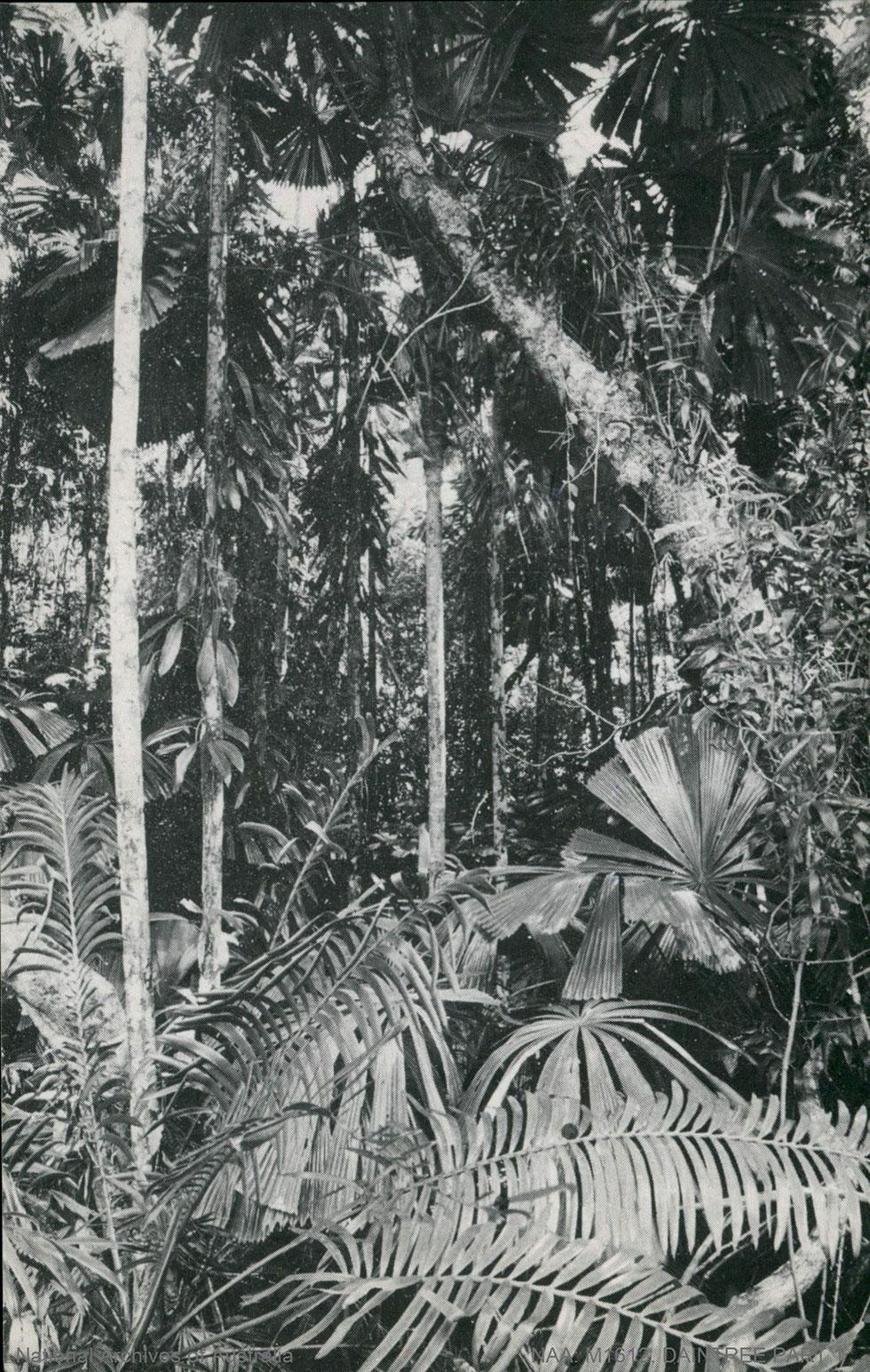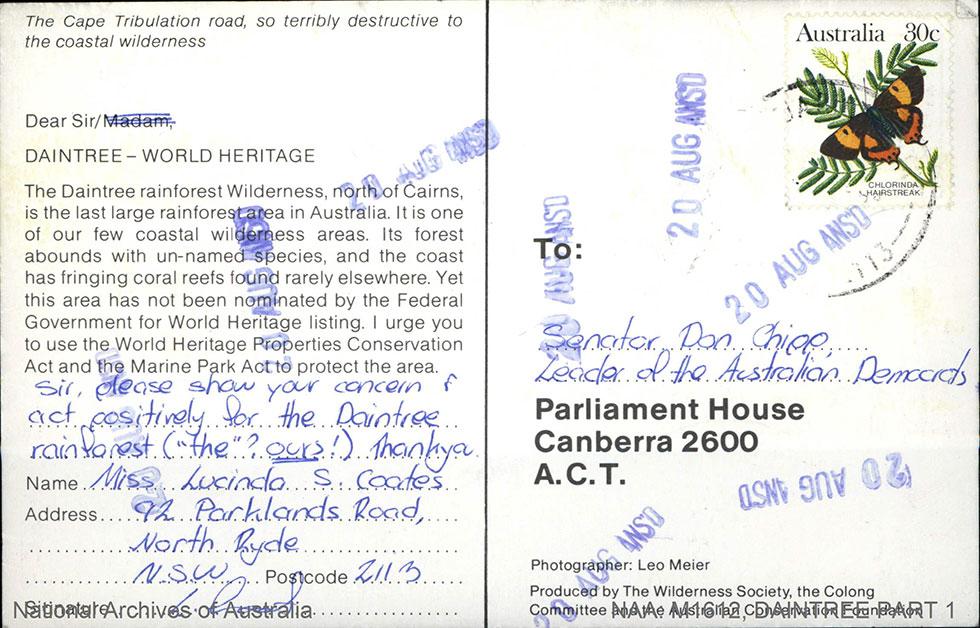

Aboriginal and Torres Strait Islander people should be aware that the National Archives' website and collection contain the names, images and voices of people who have died.
Some records include terms and views that are not appropriate today. They reflect the period in which they were created and are not the views of the National Archives.



[Page 1]
[Black and white photo of rainforest.]
[Page 2.]
[A pre-printed postcard, with blank spaces left for addresses and a short, written message. It has been stamped several times '20 AUG ANS'D [answered]'.]
[Left half of postcard:]
[In italics:] The Cape Tribulation road, so terribly destructive to the coastal wilderness[.]
[Pre-printed message:]
Dear Sir/Madam, ['madam' has been crossed out.]
[Capitalised heading:] DAINTREE – WORLD HERITAGE
The Daintree rainforest Wilderness, north of Cairns, is the last large rainforest area in Australia. It is one of our few coastal wilderness areas. Its forest abounds with un-named [sic] species, and the coast has fringing coral reefs found rarely elsewhere. Yet this area has not been nominated by the Federal Government for World Heritage listing. I urge you to use the World Heritage Properties Conservation Act and the Marine Park Act to protect the area.
[Handwritten message:] Sir, please show your concern & act positively for the Daintree rainforest. ('the'? ours!) Thankyou [sic].
[Blank spaces labelled 'Name', Address', and 'Postcode' filled in as follows:]
Miss Lucinda S. Coates
92 Parklands Road,
North Ryde
N.S.W. 2113
[Handwritten signature:] L. Coates
[Right half of postcard:]
[In the top right corner is a 30 cent stamp showing a butterfly on some greenery.]
To:
[Handwritten:] Senator Don Chipp,
Leader of the Australian Democrats.
[Pre-printed:] Parliament House
Canberra 2600
A.C.T.
[Pre-printed footer in small text:]
Photographer: Leo Meier
Produced by The Wilderness Society, the Colong Committee and the Australian Conservation Foundation.
This record is a sample of one of many postcards sent to Australian Senator Donald Chipp to oppose the building of a road through the Daintree rainforest.
The Daintree rainforest is one of the oldest tropical rainforests in the world and home to many unique animals and plants. In 1983, a local council began building a 37-kilometre road from Cape Tribulation to Bloomfield, through the Daintree Rainforest, which would cause significant destruction to it. The road was constructed mostly on the walking tracks of the Kuku-Yalanji people, the First Nations people of the area.
Environmental conservationist groups came together to oppose the project. They protested this road in several ways; from physical blockades, where they chained themselves to machinery, to letters and postcards sent to parliamentarians, like the one seen here.
The campaign to save the Daintree resulted in nation-wide and international awareness of the issue. Although the protestors were unsuccessful in stopping the road from being built, their actions paved the way for the Daintree rainforest to be listed as a UNESCO World Heritage site in 1988.
World Heritage sites are places that the United Nations Educational, Scientific, and Cultural Organization (UNESCO) have declared to be of 'Outstanding Universal Value to humanity,' and therefore worthy of protection.
The Australian Government is responsible for the protection and management of its 20 World Heritage sites, including the Daintree Rainforest. Federal laws enable the Australian government to place restrictions on – or even refuse – construction plans that would impact a site's heritage value.
The High Court of Australia has found that the Australian government has the power to protect World Heritage under the Australian Constitution. If a state or local government were to approve a project that would damage a UNESCO World Heritage site, the Australian government could use its powers to override these plans. As a result, it would be harder for a project like the road that was approved in 1983 to go ahead today.
Learn how to interpret primary sources, use our collection and more.
